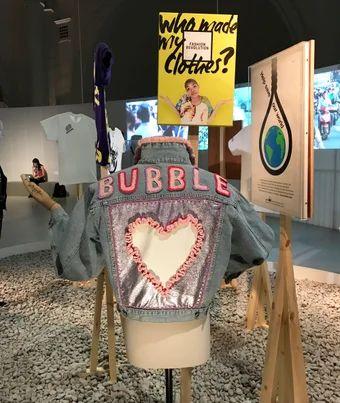
2 minute read
Fast fashion by Benjamin Von Wong
Benjamin is a conservationist photographer and recently created a Cosmic Cave made out of plastic cups for Instagram with the hashtag #plastikophobia
The idea was to attract people to come in to take photos for their instagram but to also question their use of plastics being surrounded by so much of it and feel claustrophobic.
Advertisement
Where are your clothes born?
A project by Benjamin Von Wong where abandoned mouldy clothes were recycled into several installations as a way to remind people how the clothing was made.
The exhibition took place in an abandoned factory in Cambodia “Tak Fat” that used to employ 5,000 workers. It was chosen because when it was bankrupt in 2009 it abandoned thousands of new clothes, they were found still in bags ten years later. Using those clothes, the space was used to create installations with the help of volunteers recruited from online. The project took a year and a half.

One of the installations was a waterfall, as it takes 2700 Litres to create a single cotton t-shirt, the concept was to remind people how their clothes were born.
World’s tallest closet
The exhibition was to show a lifetime’s worth of clothing. Benjamin collaborated with his designer friend Laura, they realised that a lifetime's worth of clothing depended on gender, wealth and culture so studied different statistics and graphs discovering the total was 3000 articles of clothing. The project took 5 days and were collected in the Mall of Arabia in Cairo.

They hoped to attract visitors and share their message of concern and reinstate awareness of how many of there purchases end up being thrown away in a lifetime.

Fashioned from Nature v&A

V&A Fashioned from Nature exhibition overviewed articles of clothing from 1600 to present day. The clothes were creative examples showing examples of how one doesn’t have to buy brand new clothes to be in fashion and can alter clothing themselves. And also humans relationship to nature, how much water is used to produce our garments (like denim) and are we responsible enough?

It asks the visitors to think , “How can we design a more sustainable fashion industry?” and “What can we learn from the past?” And if some of the practices we take part in now will be questioned in the future, for example leather and wool.









